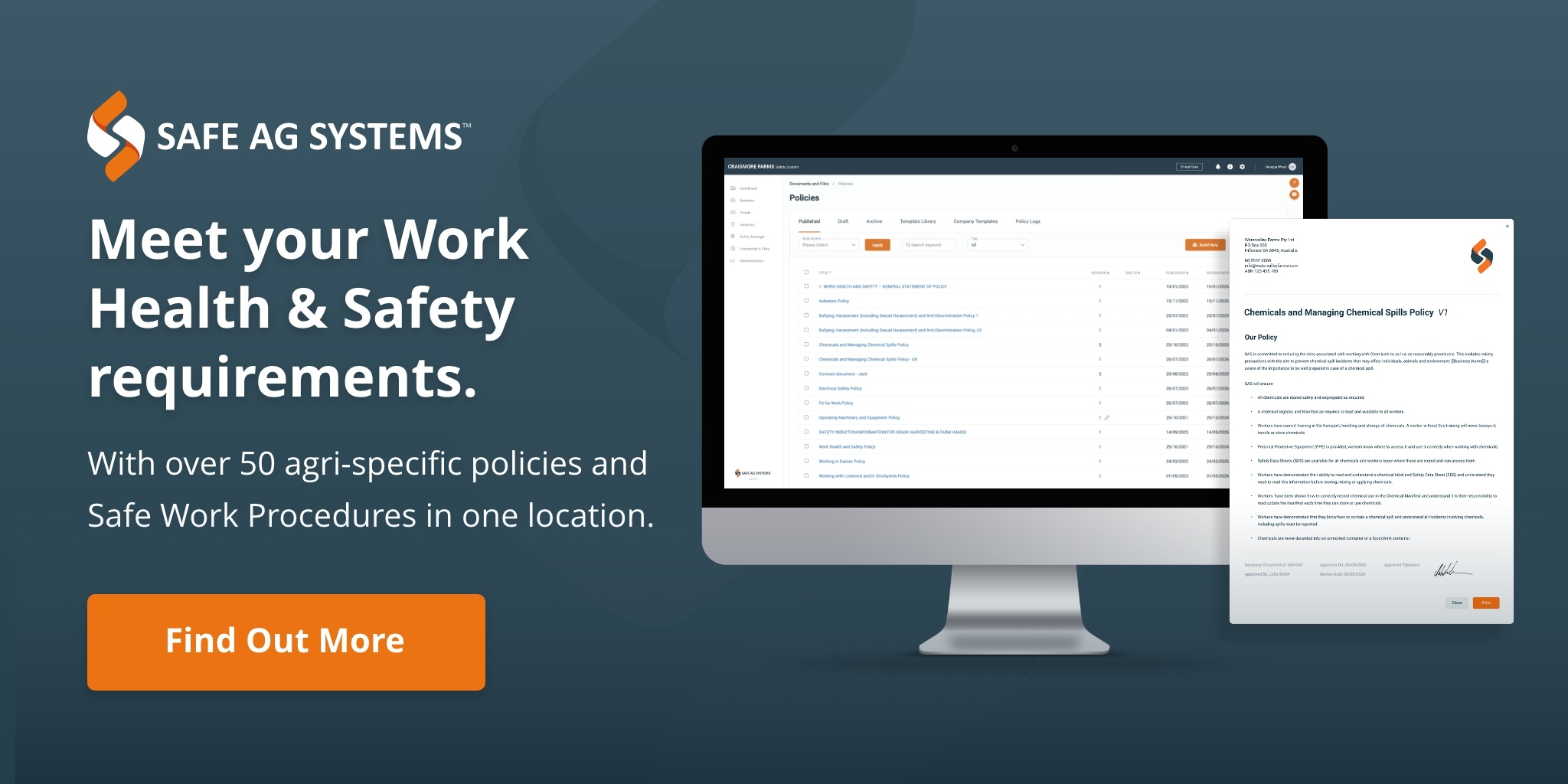Most Safety and Health terms have universal meaning; however, it is important to understand and become familiar with these safety terms and definitions, and how they apply to your agribusiness. Developing your understanding of these occupational safety and health terms allows you to make informed decision to keep your employees safe, reduce the risk of injuries and other costly mistakes.
OSHA
We’ll start with OSHA which stands for Occupational Safety and Health Administration. OSHA is a part of the United States Department of Labor and are responsible for upholding the Occupational Safety and Health Act by ensuring safe and healthy workplaces. OHSA improves conditions through setting and enforcing standards by providing training, education, and assistance.
When it comes to health and safety, a competent person is responsible for your business or organization meeting legislative requirements. This person must have the necessary experience, knowledge and skills to assist with health and safety management. Depending on the risk levels and size of your business a competent person can be yourself, a worker or an external resource.
Competent Persons
You will find this terminology across multiple OSHA standards and documents. A Competent Person is defined as one who is capable of identifying existing and predictable hazards in the surroundings or working conditions which are unsanitary, hazardous, or dangerous to employees, and who has authorization to take prompt corrective measures to eliminate them. Whilst there is no formal education required, a business typically designates a manager, supervisor or superintendent the role of Competent Person.
Certified Safety Professional
A certified safety professional or CSP is a certification offered through the Board of Certified Safety Professionals (BCSP) in the United States. They are certified competent and trained to identify and evaluate potential hazards and controls, compliance and procedures, worker tasks and work environments. To become a CSP you must have completed a bachelor's degree, four years of safety experience, hold a BCSP Qualified credential such as an Associate Safety Professional (ASP) or Graduate Safety Practitioner (GSP), and pass the CSP examination.
Risk Management
The aim of Risk Management is to eliminate or reduce risk. As the name suggests, Risk Management is the process of managing and controlling risks within your agricultural business. Managing Risks can be a simple process: just keep S.A.F.E.
S = See it. Identify the risks and hazards and things that could hurt someone.
A = Assess it. Think about what harm could come from the hazard, and how serious it might be.
F = Fix it. Put ‘controls’ in place to eliminate or reduce the risk.
E = Evaluate it. Did the controls work as you thought? This gives you a chance to tweak things to improve safety. Keep tweaking until you’re happy you’ve got things as good as possible.
Our Risk Assessment tool could be the perfect tool in your kit to help get the job done.
Hazard vs Risk
Do you know the difference between a risk and a hazard? They seem rather similar, but when it comes to safety and health, whilst they are related, they are very different. Below is an example we use to identify the differences. When working near barbed-wire fencing, you are unlikely to come to harm until you get too close.
In this example the barbs are the hazard to us and our employees, as we have identified there is potential to cause injury/harm, whereas the risk is determined by the likelihood of someone being hurt – the risk of being caught in the barbs.
NIOSH
The National Institute for Occupational Safety and Health (NIOSH) is part of the US Centers for Disease Control and Prevention, in the US Department of Health and Human Services. As a research focused agency, its mission is to develop new knowledge in the field of occupational safety and health and to transfer that knowledge into practice. This is done through tests, certifications, and trainings to occupational safety and health professionals as well as making recommendations on illness and injury prevention related to the workplace.
Topics: Safety Management System

Disclaimer: Content on this website may be of relevance to users outside of United States, but content links and examples are specific to the U.S. Please check with your local authority for your country and industry requirements.










